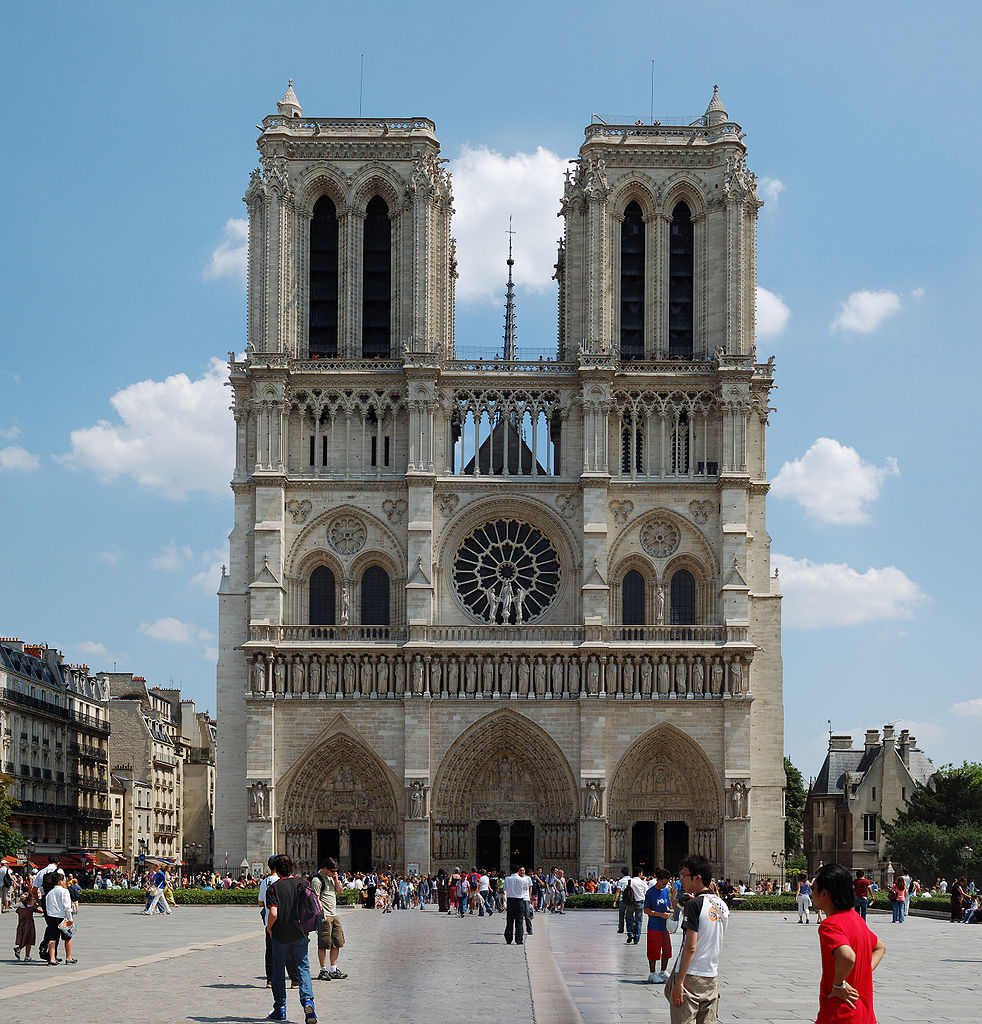
by Isaac Kirshner
We, Christians, almost lost an old friend this week.
In the waning hours of a cool April Monday, a fire started in the attic of Paris’s Notre Dame cathedral. The fire quickly spread, ravaging the scaffolding and consuming most of the oak roof and dragging the church’s lone spire down with it.
For the last millennium, Parisians daily beheld that great brooch of Christendom and marveled as they passed her. Most of us, however, might have been fortunate enough to see her basking in a humid summer holiday abroad. Whether we were deeply intimate with her or only loving spectators, the West weeps for Our Lady of Paris.
While leaving a lecture Monday afternoon, friends broke the news to me. “Notre Dame is burning,” they said. I opened my phone and to my great dismay, it was true. Our Lady of Paris was live, aflame on my screen. I then saw that great spire fall and was overcome. As I watched it drop, I was met with tears — the same tears that welled in my eyes when I first read Hawthorne’s “Earth’s Holocaust.” But these flames were visible and depleting. The fire at Notre Dame was not a work of fiction. It was all terribly real.
Photos and videos of the wreckage circulated over social media, breaking the hearts of all good people who saw them. These images still haunt our memories. Yet, we may be consoled that the heroic firefighters of Paris managed to salvage the cathedral’s main structure, saving her relics, bell towers, flying buttresses, organ, and stained glass. May God bless the priest who, too, preserved the Blessed Sacrament. Only a small piece of the interior stone roof collapsed. Notre-Dame is scarred, not lost. Still, as the flames subsided, we were left with a blackened shell. What hope do we then have in these ashes?
In a way, the fire at Notre Dame reminds us of the Church’s reflection to “memento mori” in the closing days of this Lenten season. Only six weeks ago, Christians around the world received ashen crosses on their foreheads. “Remember that you are dust, and unto dust you shall return,” we were told. The ash we don chastens our faith as we are drawn to reflection, penitence, and prayer. Since then, we have reminded ourselves to daily dwell on Christ’s Passion and our coming death. Tomorrow is Good Friday, marking the Crucifixion of our Lord. For three days we reflect on His death. Then, on Easter Sunday, the Church celebrates His glorious Resurrection and the redemption of death and ash.
It is no small significance that Notre Dame caught fire at the beginning of this Holy Week. And it is no great secret that there has been a considerable decline in the Christian faith in France and in Europe as of late. Perhaps the burning of Notre Dame offers some encouragement for the Church.
The spire and oak roof became ash, but Christians understand that beauty is born from ashes. We understand through Ash Wednesday, Lent, Holy Week, Good Friday, and Easter that ashes can be redeemed and used to chasten faith. In the meantime, the Church ought to reflect on our own ashes and pray that our faith be strengthened and renewed.
In Ecclesiastes, Solomon reminds us that there is a time for mourning and a time for gathering stones back together. Let us mourn now for our Lady of Paris, but only for a time. Easter Sunday is fast approaching, and with it, hope and renewal for Paris’s great jewel.
At the close of Holy Week, and in anticipation for the Resurrection of our Lord, let us remember that immortal first verse of Grundtvig’s hymn for the Church: “Built on the Rock the Church doth stand, even when steeples are falling. Crumbled have spires in every land; Bells are still chiming and calling. Calling the young and old to rest.”
For now, may our Lady of Paris rest in peace until her bells chime again.
Isaac Kirshner is a sophomore studying American Studies

